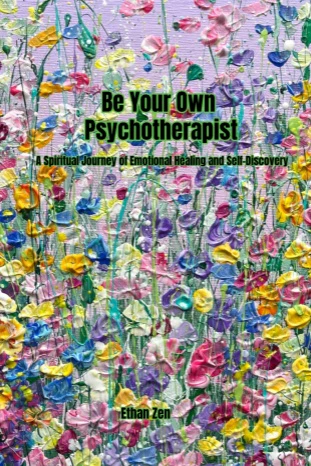What is Zen Meditation, and How to Practice It in Daily Life
Zen meditation, also known as “Zazen” or “meditative concentration,” originated in ancient India and is a core practice in Buddhism. It is more than just a form of meditation; it is a lifestyle and an attitude. Through sitting still, focusing on breathing, and observing thoughts, one can delve into the inner self, transcend worldly worries, and experience a profound sense of inner peace and wisdom.
The Essence of Zen Meditation
1.Essence
The essence of Zen meditation lies in cultivating the ability for introspection and mindfulness. Introspection is the deep insight into one’s own mental and physical states, while mindfulness is the clear awareness of each present moment. Through Zen meditation, we learn to observe and become aware of our body, emotions, and thoughts without judgment, accepting and experiencing everything in the present moment. This practice helps us go beyond the self, let go of attachments and confusion, and attain true inner peace and freedom.
2.Core Philosophy
The core philosophy of Zen meditation can be summarized as “mindfulness” and “living in the present.” Mindfulness involves having a clear perception of the body’s sensations, emotional changes, and the flow of thoughts, being acutely aware of them. Zen meditation encourages us to be fully aware of our current state, unaffected by external disturbances, and to accept and experience everything with a calm mind. It emphasizes focusing on the present moment rather than dwelling on past or future thoughts. The past has already gone, and the future is yet to come; only the present can truly be grasped. Zen meditation reminds us to let go of attachment to the past and anxiety about the future, concentrating on the present and cherishing each moment.
3.Core Concept
Zen meditation also includes the concepts of “no-self” and “dependent origination.” It views the idea of self as an illusion, a misconception about the true nature of reality. By observing the changes in the body and mind, we can gradually transcend our attachment to the self and experience the state of no-self. In this state, we are no longer bound by personal desires and needs, allowing us to see the world from a more objective and broader perspective. Moreover, Zen meditation teaches that all phenomena are interconnected and not isolated. Understanding the principle of dependent origination helps us recognize the interdependence and impermanence of things, reducing our attachment and aversion to the outside world.

Basic Steps of Zen Meditation
Zen meditation can be broken down into the following stages:
Stage 1:Sitting Meditation
Find a quiet, clean place, such as a peaceful room, a serene garden, or a spot in nature. Choose a comfortable sitting posture, such as the lotus position, half-lotus position, cross-legged, or seated on a chair. The important thing is to maintain a relaxed yet alert posture, keeping the body in a natural and comfortable state. Close your eyes and focus on your breathing, observing the breath as it enters and leaves the body. Feel the air moving through your nostrils and the rise and fall of your abdomen. Do not try to control your breathing; simply observe it, allowing the breath to flow naturally. At the same time, relax the body and mind, gradually settling into a state of calm.
Stage 2:Awareness of Sensations and the Body
Deepen your understanding of your body by observing bodily sensations and changes. Start from the head, gradually becoming aware of each part of your body, noticing their presence and sensations. Pay attention to any tension or relaxation, as well as the body’s temperature and weight. If you notice tension or discomfort in any part, use deep breathing and relaxation to alleviate it. Stay focused and aware, avoiding distractions from the external environment.
Stage 3:Awareness of Thought Flow
The mind often generates and flows with thoughts involuntarily. In Zen meditation, observe the arising and fading of thoughts without judgment. If you find yourself caught up in the stream of thoughts, gently return to observing the breath, maintaining a state of mindfulness. This practice helps you understand your thinking patterns and habits, allowing you to better manage your thoughts and avoid the influence of negative thinking.

Stage 4:Awareness of Emotional Changes
Emotions are internal responses that often arise and shift spontaneously. In Zen meditation, observe the fluctuations and nature of your emotions without judgment. When you notice emotions arise, do not let them control you; instead, remain calm and objective, observing the changes and nature of the emotions. This awareness helps you understand the underlying needs and conflicts within, enabling you to better manage your emotions and avoid being overwhelmed by them.
Stage 5:Unity of Mind and Body
In this stage, expand your awareness to the entire mind and body, observing them as a whole. Feel the unity and inner calmness of the mind and body, experiencing a state that transcends the self. Maintain focus and mindfulness, avoiding distractions. When the mind and body become one, and you experience inner peace and wisdom, you have reached the purpose of Zen meditation.
Zen meditation ultimately aims to help you achieve a state of profound tranquility, wisdom, and freedom from attachments, cultivating a mindful presence in every moment of life.







